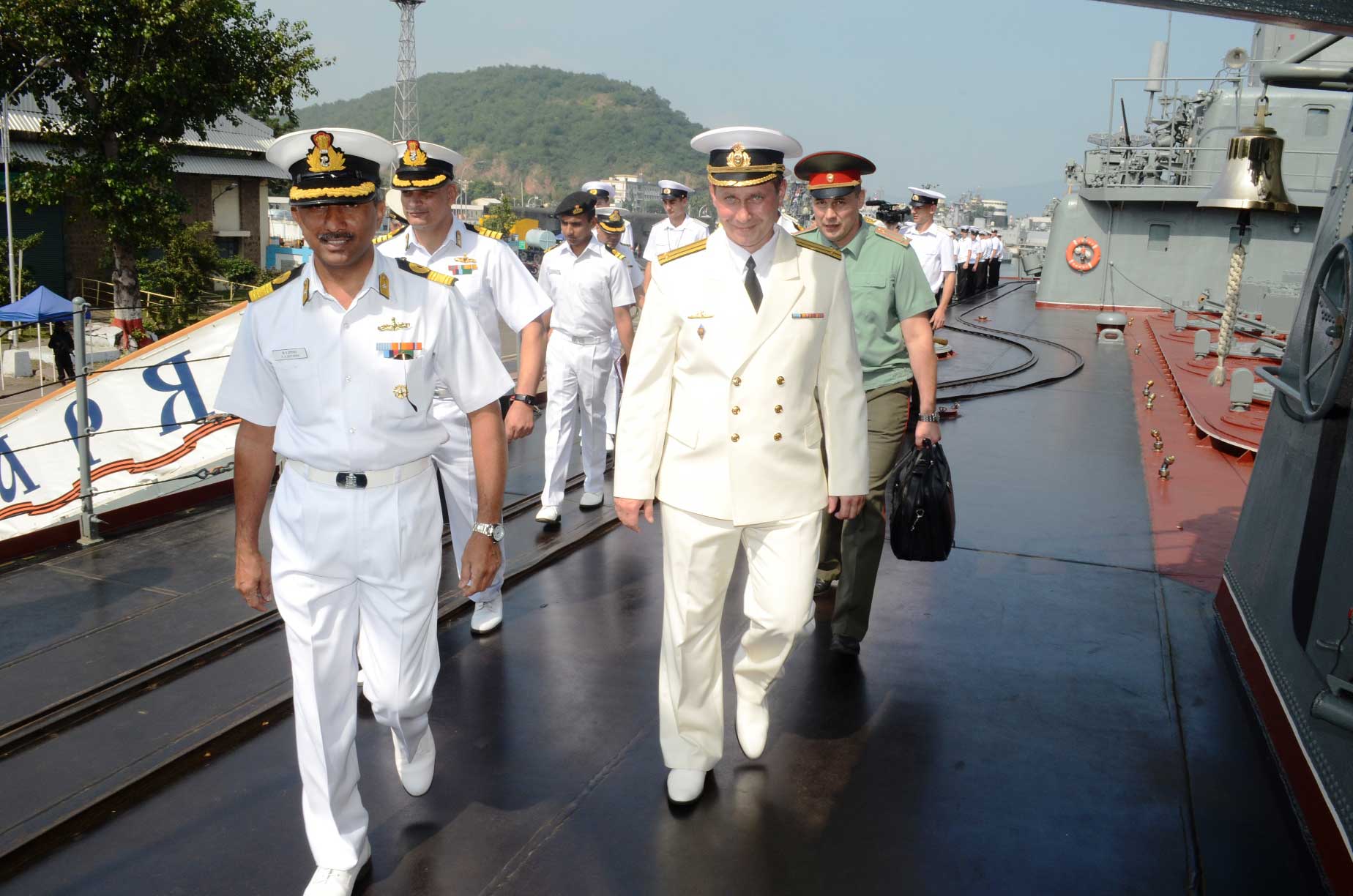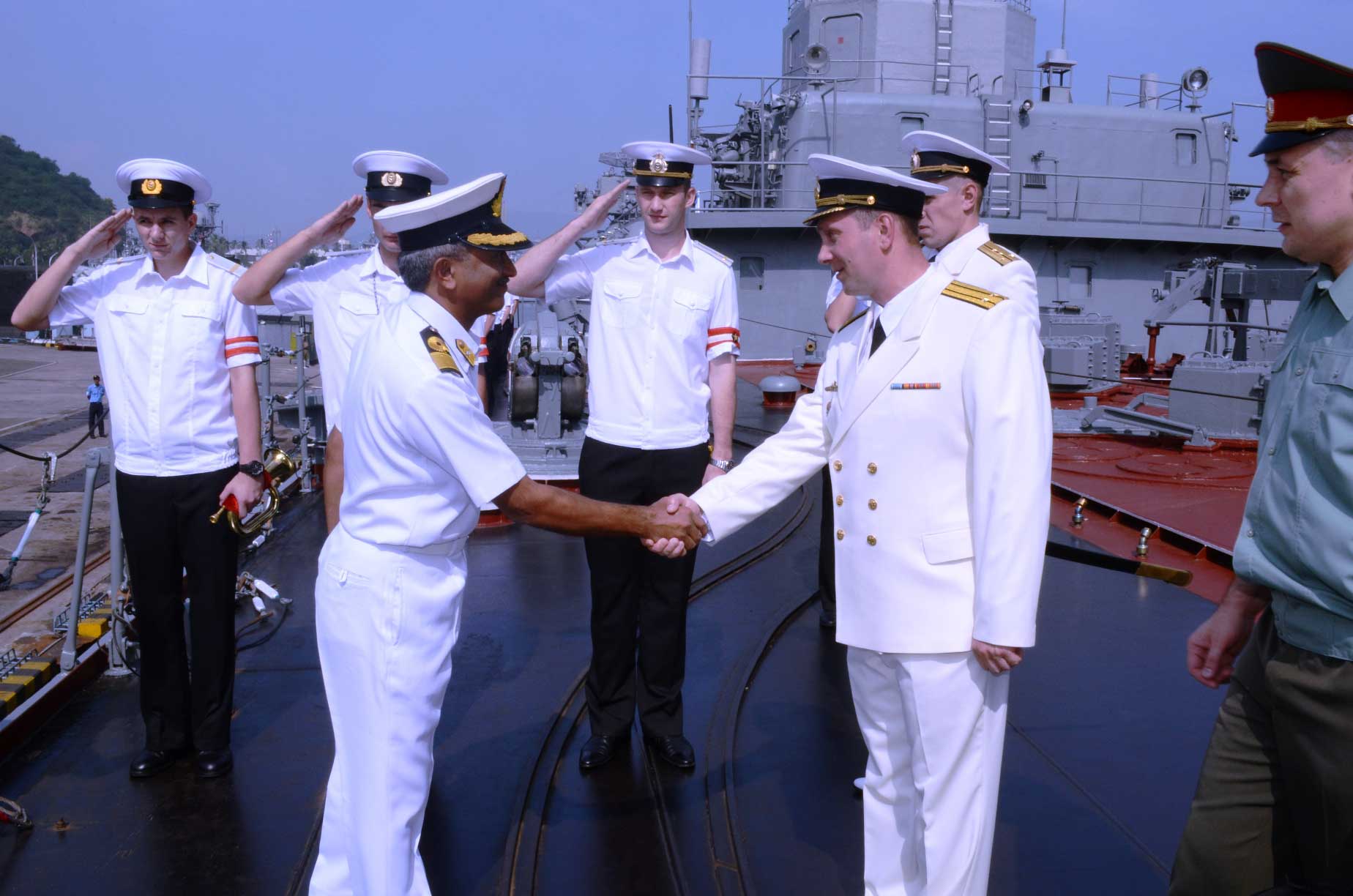The primary aim of this exercise is to increase interoperability between the two navies and develop common understanding of procedures for maritime security operations. The scope of INDRA NAVY-15 includes wide-ranging professional interactions during the Harbour phase and a diverse canvas of operational activities at sea across a spectrum of maritime operations.
The Indian Navy was represented by INS Sahyadri an indigenous frigate, INS Ranvijay, a guided missile destroyer and INS Shakti, a Fleet Support Ship. In addition, a submarine, INS Sindhuvir, the P8I Long Range Maritime Patrol Aircraft, Dornier Short Range Maritime Patrol Aircraft, Hawk Advanced Jet Trainer and other integral rotary wing helicopters were scheduled to participate in the bilateral exercise.

The Russian Federation Navy (RFN) represented by Vice Admiral Ryabukhin Andrey, Deputy Commander of the Pacific Fleet and ships from the Pacific Fleet, based at Vladivostok. RFN ships Varyag (cruiser), Bystry (destroyer), Alatau (rescue ocean going tug) and Boris Butoma (fleet tanker) were expecting arrival at Visakhapatnam December 6 to participate in INDRA NAVY-15.
The exercise would be progressed in two phases viz; the Harbour Phase (December 7-9) at Visakhapatnam and the Sea Phase (December 10-12) off Visakhapatnam. The Harbour Phase would encompass table-top exercises and planning conferences ashore, prior progressing to sea. The Sea Phase would include various facets of fleet operations.
INDRA NAVY-15 will help to further strengthen mutual confidence and interoperability, and also enable sharing of best practices between both navies. The exercise will be another milestone in strengthening maritime security cooperation between the two navies and will also serve to reinforce the long standing bond of friendship between the two countries.

INDRA NAVY is a bilateral maritime exercise between the Indian and Russian navies and epitomises the strategic relationship between the two countries. Initiated in 2003, the exercise has matured over the years with increasing scope, complexity of operations and level of participation.
|